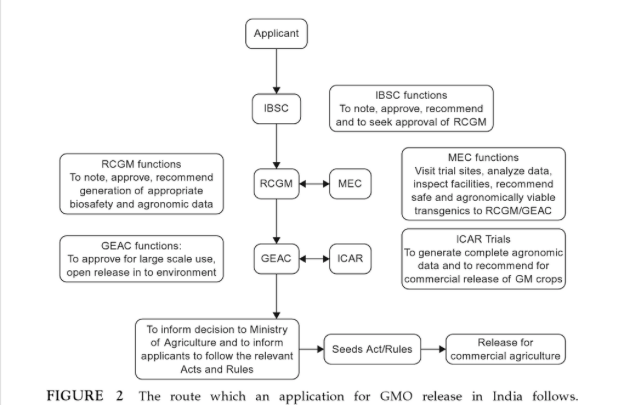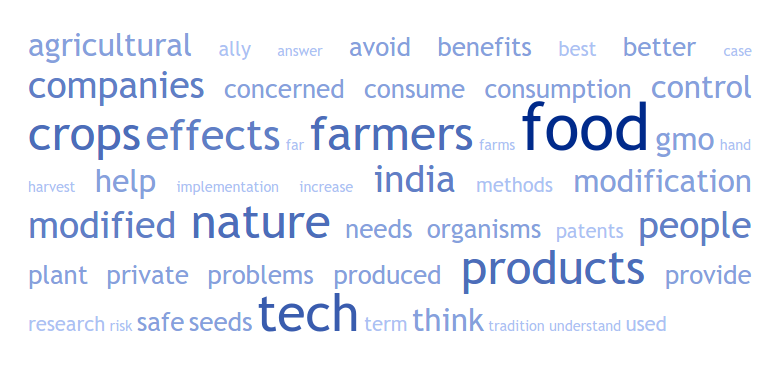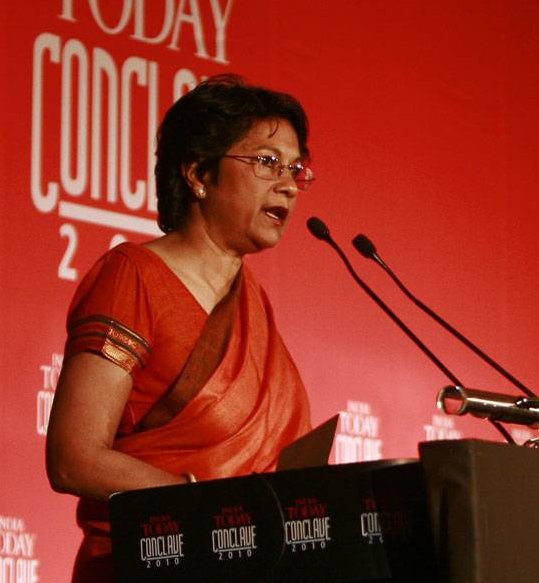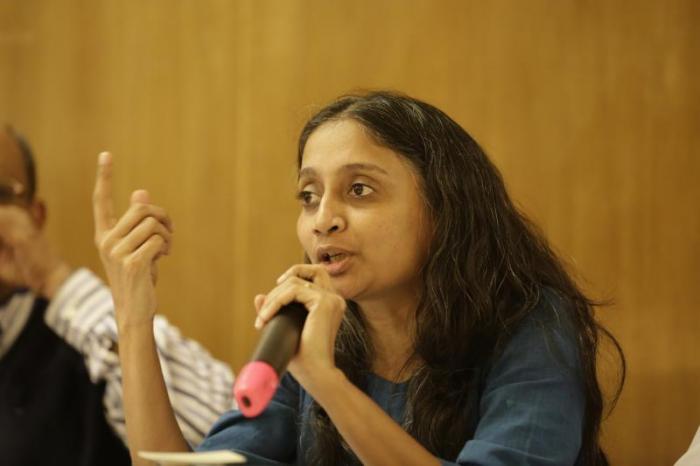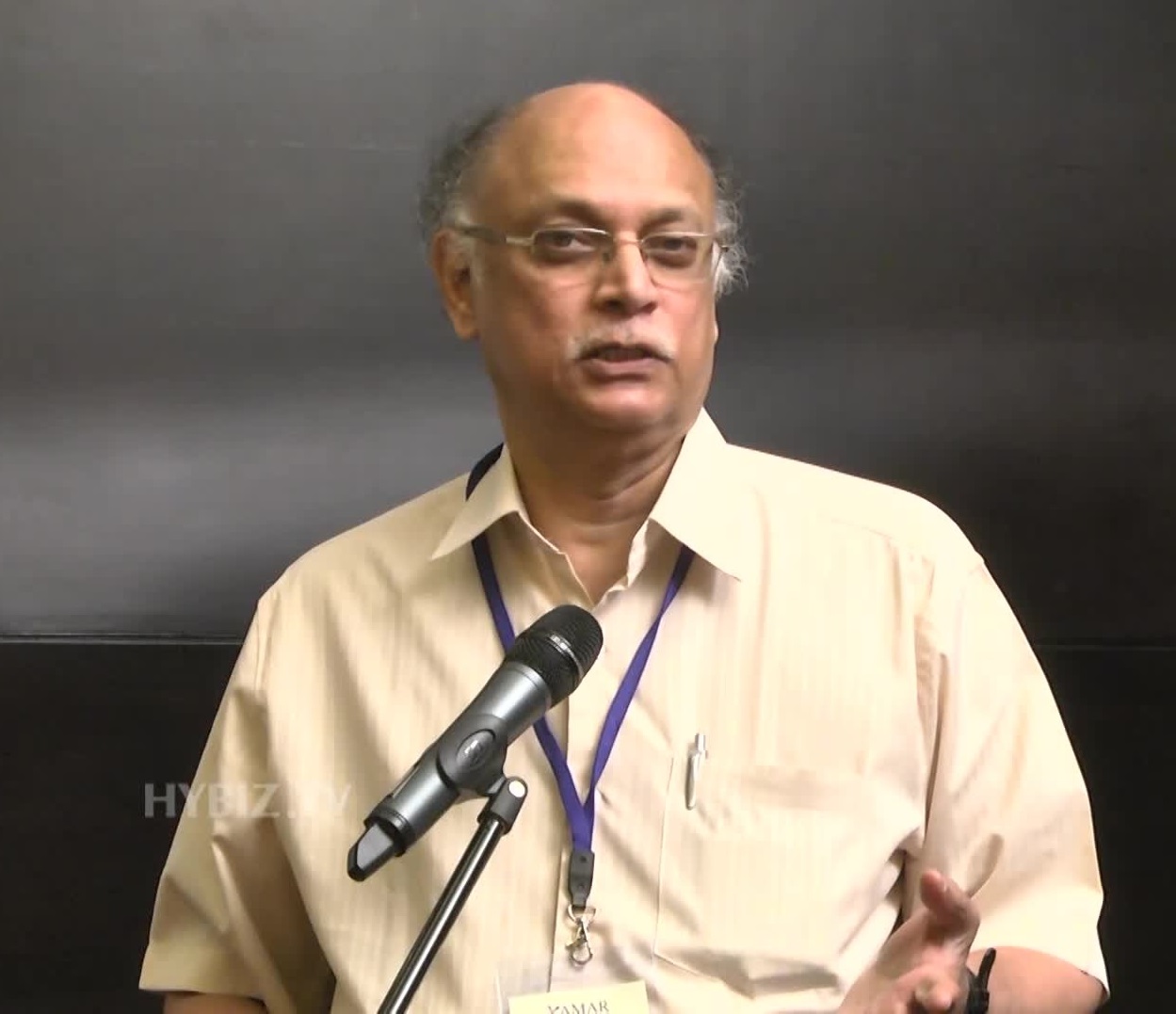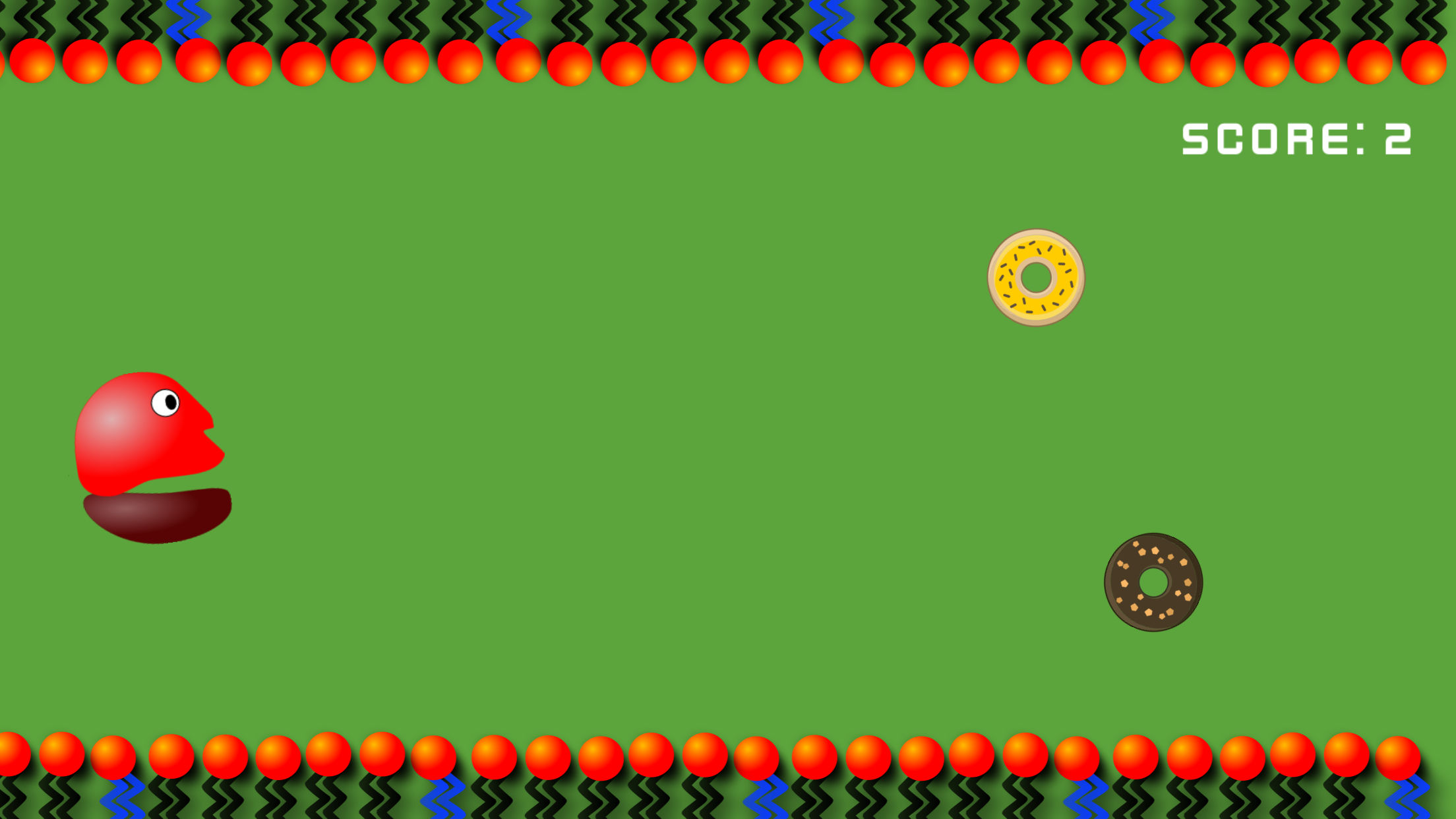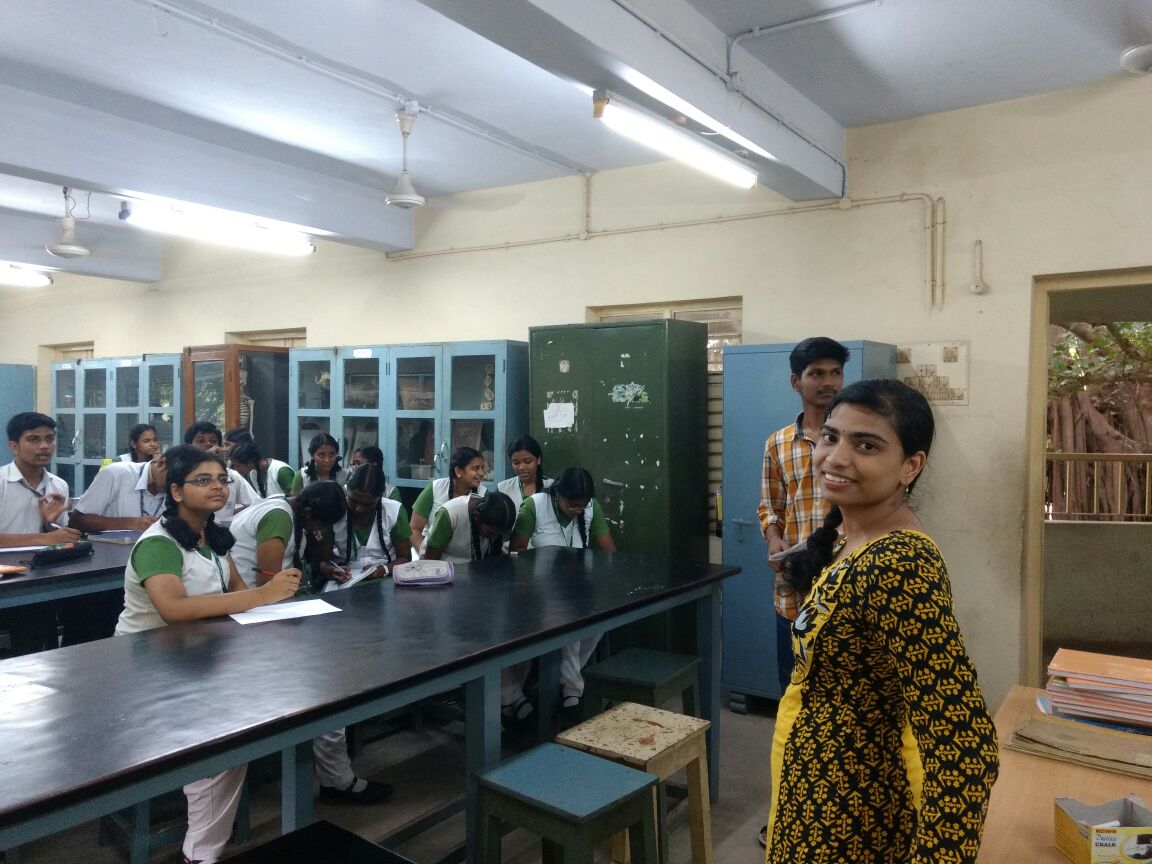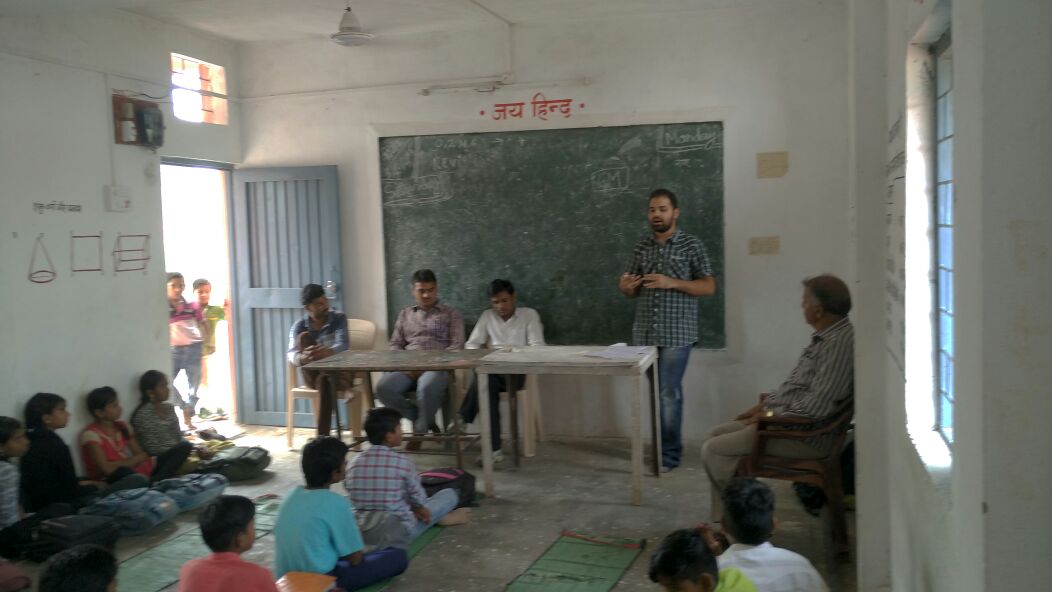Venkat1994 (Talk | contribs) |
|||
| (35 intermediate revisions by 3 users not shown) | |||
| Line 1: | Line 1: | ||
| − | {{IIT-Madras/CSS}} | + | {{IIT-Madras-Top/CSS}} |
| − | + | ||
| − | + | Our project is focused on fundamental issues related to measurement and computation in cells. For our Human Practices work, we decided to educate people about our project. For which, we made a game, Codonut, which describes codon preference in a fun way. Apart from this, we pondered over what avenue we should direct our energies for human practices and public outreach. We settled on Genetically Modified foods for several reasons, the most important being the raging debate ongoing in our country over certain crops like GM mustard and '''the impact it would have on agriculture and farmers'''. In order to understand the current scenario of GM technology in India and the conflict between anti-GM activists versus current government, we decided to understand the issue from technical and political point of view. | |
| − | + | ||
| − | + | = GMO In India = | |
| − | + | ||
| − | + | == Survey == | |
| − | + | ||
| − | + | Agriculture is demographically the broadest economic sector in India which accounts for approximately '''13.7% GDP and 50% of the workforce''' (approx. 600 mil). The conventional technology currently in usage is not self-sufficient for the ever-growing population. It also requires usage of pesticides and insecticides which deteriorates the environment. Owing to the GM crops' high productivity, low pesticides and insecticides usage, drought resistance and high nutritional quality, we took the task of exploring more about the GM technology and creating awareness on both the fronts, pros and cons. | |
| − | {{IIT-Madras- | + | |
| + | Currently in India, '''93% of cotton grown is Bt cotton'''. There are several crops including rice, maize, mustard etc. are under field trials, with a huge ongoing debate scrutinizing its biosafety levels. For a new GM crop to be introduced, it has to go through many regulatory processes by the government. | ||
| + | |||
| + | Since most of the population is unaware about GM technology, we tried to understand the advantages and disadvantages of GM crops along with how it is tested for safety in India. This prompted us to investigate GMO related issues by reaching out to it's '''stakeholders, general public (consumers and farmers), NGOs and regulatory authorities. Our objectives were to answer following questions: | ||
| + | |||
| + | 1. What percent of general public have heard of GMO and are aware of it's economical, technical and political implications? | ||
| + | |||
| + | 2. What is the perception of public regarding the consumption of GM foods? | ||
| + | |||
| + | 3. What do people believe as better in GM patenting regime of the country? | ||
| + | |||
| + | 4. What makes a person opt for GM food consumption? Is it better knowledge and understanding of GM? | ||
| + | |||
| + | Considering these, we designed our '''survey'''. We conducted our survey in colleges of four different states with the help of [https://2016.igem.org/Team:SVCE_CHENNAI SVCE Chennai], [https://2016.igem.org/Team:IISc_Bangalore IISc Banglore], [https://2016.igem.org/Team:IIT_Delhi IIT Delhi] and [https://2016.igem.org/Team:IIT_Kharagpur IIT Kharagpur] (total 330 responses). We surveyed undergraduates, post graduates and professors across various departments and later on categorized them into two groups Biotechnology related and non-Biotechnology related departments. We also made sure that we have enough responses in each category. | ||
| + | '''You can view the survey questionnaire''' [https://static.igem.org/mediawiki/2016/b/b3/Iitmsuvey.pdf here]. | ||
| + | |||
| + | '''An application for approval of a GMO in india has to go through the following committees:''' | ||
| + | |||
| + | '''IBSC''': Institutional Biosafety committee | ||
| + | |||
| + | '''RCGM''': Review Committee on Genetic Manipulations | ||
| + | |||
| + | '''MEC''': Monitoring cum Evaluation Committee | ||
| + | |||
| + | '''GEAC''': Genetic Engineering Approval Committee | ||
| + | |||
| + | '''ICAR''': Indian Council of Agricultural Research | ||
| + | |||
| + | [[File:Gmoiitm.png|center|700px]] | ||
| + | |||
| + | == Analysis == | ||
| + | We believe that GM crops/foods would be a very important part of our life in the future, if not today. Genetic Modification technology would be developed to an extent that all of us would be satisfied with its technical, economical and political implications. We believed that the answers to all of our questions would be 'YES'. Therefore, we have looked at the patterns, which give us 'YES' answers in our questionnaire. The percentage of people responding 'YES' have been color coded like: 0-40% red, 40-70% yellow, 70-100% green. In this way, we can also estimate that how close are we to go green! | ||
| + | We found interesting results in accordance with our hypothesis. We had divided our participants into six groups: Undergraduates, Graduates and Professors, each from Biotech or non-Biotech. A comprehensive analysis of our results can be obtained [https://static.igem.org/mediawiki/2016/2/2d/Survey_igem.pdf here]. | ||
| + | Below is the tag cloud representation of the comments, which we received in our survey. | ||
| + | [[File:Survey_comments.png|center|780x370px]] | ||
| + | |||
| + | |||
| + | = Interviewing activists = | ||
| + | |||
| + | == Dr. Suman Sahai, Chairperson, Gene Campaign == | ||
| + | [[File:Iitm_suman_sahai_genecampaign.jpeg|250px|left]] | ||
| + | '''Dr. Suman Sahai''', has had a distinguished scientific career in the field of genetics, was awarded the "Padma Shri" in 2011. In 2004, she received the Borlaug Award for her outstanding contribution to agriculture and the environment. Dr. Sahai has a Ph.D. in genetics and has served on the faculties of the University of Alberta, University of Chicago, and the University of Heidelberg. She was appointed Knight of the Golden Ark (Netherlands) in 2001 for generating awareness about the importance of genetic resources to food security. | ||
| + | Dr. Sahai is founder Chairperson of the Gene Campaign which is a leading research and advocacy organization, working on issues relating to food, nutrition and livelihoods. | ||
| + | |||
| + | In our skype interview with her. She talked about technical, economical and political issues of GM technology as such and in the context of India. Her views can be described as followings: | ||
| + | |||
| + | In Genetic Modification technology, we perform changes in the genetic makeup of cells e.g. adding extra genes form different species or deleting a gene. Such gene alterations can have new unwanted product and it has been found in case animal models, mice models, which were fed with GM foods. There are serious Bio-safety issues with GM organisms. Certain parameters are almost impossible to be tracked such as the changes in the genetic makeup of cells over generations e.g. jumping genes, confirmation of the desired genetic changes in the cell over generation, huge cost for genome wide sequencing to see if the modifications has not happened in other part of genome. Overall, Bio-safety tests should be more stringent and should give information regarding genome and gene propagation. From economical and political point of view, any technology should not be thrown upon the public, its adoption should be done democratically, which is only when it's requirement and necessity is felt. Therefore, it is necessary to perform cost & benefit analysis on any GM product. As GM technology possess certain risks like any other technology, risk & benefit analysis should also be performed. If we look at the journey of GM technology, it hasn't done any significant benefit to the community yet. So, we might need to start looking for alternative ways to solve our problems e.g. use of pest control measures instead of Bt in Bt-cotton or pesticides. The biggest problem of the Indian agriculture system is water crisis because 70% of our agriculture dependent on monsoon. | ||
| + | |||
| + | On the issue of past and present Indian governments handling field trial, permission for cultivation of GM crops, she believes that open field trials are done with carelessness and there is a huge risk of spreading of GM seeds into environment. Farmers should be consulted before doing field trials in their field. They should also be well informed about the implications of GM crops. | ||
| + | |||
| + | When asked about the awareness regarding GM technology implications among consumer and farmers, she asserted that awareness level is very very low and there is a need for public and private funded awareness programs and workshops to educate farmers and consumers. Regarding the patent regime in the country, she was completely the monopolization of seeds via GM seed patenting as they would increase the cost of seeds and take away the freedom of farmers. | ||
| + | |||
| + | == Kavitha Kuruganti, ASHA Convener == | ||
| + | [[File:Iitm_kavitha_ASHA.jpeg|250px|right]] | ||
| + | She is one of the conveners of ASHA Kisan Swaraj Alliance (Alliance for Sustainable & Holistic Agriculture), which is a network of people committed to a cause (not an NGO). She is a part of the not-for-profit social enterprise that seeks to revive organic Indian cotton in a garment value chain called TULA. | ||
| + | |||
| + | While reading her articles on GM, we were prompted to interview her. She has been very vocal about her protest against GM crops in India. She has protested against the government permission to Monsanto for open field trials. We asked our questions to her by exchanging mails. Her views on GMO in India, can be described as followings: | ||
| + | |||
| + | Transgenics are unsustainable and incompatible with agro-ecological, organic farming, apart from being potentially detrimental to consumer health and conservation of biodiversity as one of the bedrocks of economic and ecological sustainability. The control of seeds into the monopolistic hands of a few multinational seed corporations would not at all be helpful for our farmers. The unproven claims of benefits of GM crops are not needed as plenty of natural seeds for each crops are available. GM crops have not done any benefit to consumers. GM crops are largely unsustainable in their reliance on external, non-renewable inputs. Precision of genetic engineering has been shown to be a myth by many scientific studies. An upsurge in the consumption has been observed due to the use of insecticides, which is giving rise to highly resistant weeds, also known as superweeds. A continuous production of insecticide reduces soil microbial activity. GMs are a diversion to problems, for which solution already exists in the form of traditional organic farming. A thorough experimentation should be performed before putting the GM crops into the environment. | ||
| + | |||
| + | == Genetic Engineering Approval Committee, Government of India == | ||
| + | |||
| + | [[File:Maxresdefault.jpg|250px|left]] | ||
| + | Dr. Sesikeran, former chairman of RCGM (Review committee on Genetic manipulation- India), former director of NIN (National Institute of Nutrition). He was one of the prominent persons involved in approving of GMO related research/products in india. He was kind enough to have a conversation with us through mobile phone. He was answering our questions in both ethical and technical ways. | ||
| + | |||
| + | 1. '''How do you ensure the reliability of GMOs as genetic modifications are uncertain and can possibly affect the genetic makeup of them/other interfering organisms?''' | ||
| + | |||
| + | In earlier days also genetic manipulations were done in labs which involved getting random mutations by radiation. Now better technologies to specifically modify a gene have been developed which is surprisingly becoming more questionable among the society. Artificial human insulin which is saving the life of many diabetic patients is also a product of a GMO which has not got into any heated debates. With this we can understand the scope of genetic engineering techniques to the mankind and should deal with things more scientifically. | ||
| + | (The basic tests done to ensure the stability of the gene in an organism is discussed in the following questions). Talking about ‘jumping of genes’ or horizontal gene transfer from one organism to another, it is a theoretical phenomenon (observed in labs between microorganisms) which is not observed practically in crop fields. | ||
| + | |||
| + | 2. '''How's the effect of GMOs on the environment such as soil and other flora and fauna estimated?''' | ||
| + | |||
| + | Some of the foreign countries have grown GM crops for years and have not been reported with any considerable harmful effects. This gives us the motivation to start with the discussion of conducting field trials to assess the long term effects in India.As part of regular approval process extent of pollen transfer, soil nutrition analysis, effect on useful bees and insects and so many other tests are performed in confined fields. Before going into analyzing the effects on soil, the crop is grown for 3-4 generations for achieving gene stability of the inserted gene in a location. Multi Location studies are done. GEAC seeks data of two levels of biosafety research trials for 3 crop season in different locations (usually 15 locations- 5 locations per crop season*3). For one location only one trial is conducted. | ||
| + | |||
| + | 3. '''If somebody comes up with an effective new GM crop with certain benefits, they also come with unknown risks so could you please comment on the risk-benefit analysis being done to get to a conclusion before proceeding with the research?''' | ||
| + | |||
| + | Frequent usage of mobile phones has the potential hazard of leading to brain tumors but still it is introduced and used by almost all as the percentage of risk associated is very less. Here the benefits outweigh the risks. We analyze the risks associated with an organism by looking at things like whether it has got a foreign protein due to modification. ‘Compositional equivalence’ (compositional analysis with the non GM counterpart) is done to ensure that gene modifications and not leading to secretion of any other hazardous proteins. Other studies like ground water pollutant level, toxicity analysis is also done to ensure safety. We go further and approve a crop if the benefits of it outweigh the possible risks which are highly improbable. | ||
| + | |||
| + | 4. ''''As farmers are the main gain takers of GM crops with its comparative high yield, how do you ensure that they are well aware about what they are cultivating?''' | ||
| + | |||
| + | [kvks- http://krishi.icar.gov.in/Index.jsp Krishi] vigyan kendras are set up to aware the farmers and provide them information about seed variety, kind of insects attacking a particular crop, and many field demonstrations. | ||
| + | |||
| + | 5. '''We also spoke with members of Gene campaign and Asha, one of their main concerns was there are other safe cultivation methods which could be effective if implemented properly. Please comment on the necessity of GM crops.''' | ||
| + | |||
| + | Other yield increasing cultivation methods involve hybrids where random characters are mixed and getting our favourable character is uncertain. It is time consuming and not efficient. No other methods have produced insecticidal and high yielding crops like GM technology. | ||
| + | |||
| + | 6. '''How do you tackle insect developing resistance to the crop’s killing nature due to insecticidal crops?''' | ||
| + | |||
| + | This problem of insects developing resistance is existing from olden days even with use of pesticides. Only a small population of the insects were found to develop resistance and there comes an issue if they start to transfer those genes either horizontally or vertically. One of the effective ways is to cultivate a very small percentage of non-bt crop over the perimeter of the land where bt crop is cultivated. Thereby reducing the chance of resistant genes being transferred to large part of the population. This method was found effective and other methods like using a small percentage of pesticides is also done. | ||
| + | |||
| + | 7. '''As 70% of the population of india is involved in agriculture, should patenting of crops be promoted?''' | ||
| + | |||
| + | This is still under discussion where a balance should be made between protecting the intellectual rights of an innovator and the farmers from paying high amount of money for their seeds. If patenting is allowed, at first, GM seeds will be comparably costlier than non- GM but it is expected as it’s output are comparatively high. | ||
| + | Talking about reduction in efficiency levels in some areas of india (Bt cotton issue), GM crops are highly target specific. It kills only certain species of insects. It might not be effective in certain locations as the pests might vary. | ||
| + | |||
| + | The talk was very informative and it helped us in explaining to the public about GMOs in an effective manner. | ||
| + | |||
| + | = Education & Awareness = | ||
| + | |||
| + | == Educating == | ||
| + | == Codonut-a game == | ||
| + | [[File:0x0ss.jpg|right|250px]] | ||
| + | We were fascinated by the concept of codon bias, which forms the basis for the modelling aspect of our project. We wondered if we could teach this concept with the help of a fun mobile game. We believe games can truly help people of all ages understand core concepts underlying day to day phenomena in a lasting way. This was how the game was born. | ||
| + | |||
| + | In the game, the player guides the ribosome character by tapping on the screen(thus lifting him up). The player must not hit the upper or lower bounds of the playing area(represented by the lipid bilayer). As an analogy to codon bias, we decided to use donuts, with ribosome preferring chocolate donuts above all others(who doesn't love chocolate?). If you have yet to play the game, you can download it on the [http://www.appstore.com/Codonut App Store] or [https://play.google.com/store/apps/details?id=com.igemiitm.codonut Play Store]. By the time of wiki freeze, our game has been downloaded by 91 people and reviewed by 24 people. | ||
| + | |||
| + | == Teaching synthetic biology to high school students == | ||
| + | |||
| + | [[File:Vanavani.jpeg|500px|left]] | ||
| + | |||
| + | Education with fun in Vana vani Matriculation school, chennai, Tamil Nadu, India | ||
| + | To expand the synthetic biology community, we believed it’s necessary to create interest in the fundamental stage itself. We went to a school in our locality and interacted with our fellow student community in 12th grade. They all had their major as biology but still they were overwhelmed to know that they can engineer life! | ||
| + | |||
| + | We started with the very basic of DNA, as a source of information written in the language of cells which has only four letters and went to central dogma with proteins as meaning of the words created by those letters. Several analogies made by us like ‘RNA as a photocopy of a particular page in a book’ made them understand well about the concepts. After this we went on to restriction enzymes which cut at palindromic sequences. | ||
| + | |||
| + | Activity: We made a simple activity to make them understand a palindromic sequence. A set of letters were given (say ‘AGACTT’) and the teams were asked to come up with as many palindromic sequences as they can with those letters. Many teams came up with many answers but actually one found out that it is just a simple math! With this we made sure that they understood the basics of complementary base pairing and reverse complementary matching of palindromic sequences. | ||
| + | |||
| + | Atlast the students were told what synthetic biologists are capable of and were asked to come up with some fun applications. We found our future IGEMers as their answers really amused us like glowing roadside trees, toxin detection using fluorescence and many more! | ||
| + | |||
| + | |||
| + | [[File:Madhyapra.jpeg|450px|right]] | ||
| + | |||
| + | An awareness drive was conducted at the local Government school of Hasampura, a small village in the district Ujjain, Madhya Pradesh, India. Almost all the students of the school came from families with farming and agriculture background. The students were made aware of the importance of science in their life and how crucial it can be when GM crops are introduced at a large scale in the agricultural fields. Various parameters were discussed with them which included the quantity of GM seeds, amount of manure and fertiliser used, nutritional value, cost calculations, insecticides and pesticides usage etc, which were then compared with the conventional technology currently used. Various governmental policies regarding GM crops were also discussed. The students responded well and conveyed the message to their parents. In this way, we were able to spread awareness about the importance of GM crops and how can it revolutionize their lives. | ||
| + | |||
| + | |||
| + | == Educating consumers about GM foods == | ||
| + | |||
| + | With our survey we realized that most of the people even from academic backgrounds were not aware about GMOs so we decided to go to public directly and explain to them about the science of GM in simple terms. | ||
| + | |||
| + | We went to nilgiris (a supermarket in our locality) and were interacting with the customers to get an idea of how much they are aware about GM foods. While interaction we explained the science of GM, listing the pros and cons of GM in simple terms and gave away the following [https://static.igem.org/mediawiki/2016/a/af/Iitm_igembrochure.pdf pamphlet]. | ||
| + | [[File:Iitm_education.jpg|300px|left]] | ||
| + | |||
| + | The above ‘GM foods’ content was made focusing on the biological terms, so some of the people whom we met felt difficult to understand it. | ||
| + | |||
| + | We came up with one other GM science content (also translated it to our home state language-Tamil) where we focused on explaining in agricultural context:You can view both files [https://static.igem.org/mediawiki/2016/3/35/Iitm_gmtam.pdf here]. | ||
| + | |||
| + | The power of social media in sharing information is very fast and effective so the above discussed points were spread to the public via Facebook, Whatsapp. | ||
| + | |||
| + | |||
| + | |||
| + | '''The Facebook pages where we posted our information are listed below.''' | ||
| + | |||
| + | [https://www.facebook.com/FACTSSCIENCE/posts_to_page/ '''Amazing Science Facts & Inevitable Trickzz's''']- 18,842 page likes | ||
| + | |||
| + | [https://www.facebook.com/vivasayamkarkalam/posts_to_page/ '''Vivasayam karkalam - விவசாயம் கற்கலாம்''']- 9,318 page likes | ||
| + | |||
| + | [https://www.facebook.com/kgp22267/posts_to_page/ '''Tamil Nadu Agriculture - விவசாயம்''']- 20, 400 page likes | ||
| + | |||
| + | '''Tamil Agriculture - தமிழ் வேளாண்மை வளர்ப்போம்'''- 8,695 page likes | ||
| + | |||
| + | |||
| + | |||
| + | |||
| + | |||
| + | {{IIT-Madras-Bottom/CSS}} | ||
Latest revision as of 01:32, 20 October 2016
Our project is focused on fundamental issues related to measurement and computation in cells. For our Human Practices work, we decided to educate people about our project. For which, we made a game, Codonut, which describes codon preference in a fun way. Apart from this, we pondered over what avenue we should direct our energies for human practices and public outreach. We settled on Genetically Modified foods for several reasons, the most important being the raging debate ongoing in our country over certain crops like GM mustard and the impact it would have on agriculture and farmers. In order to understand the current scenario of GM technology in India and the conflict between anti-GM activists versus current government, we decided to understand the issue from technical and political point of view.
GMO In India
Survey
Agriculture is demographically the broadest economic sector in India which accounts for approximately 13.7% GDP and 50% of the workforce (approx. 600 mil). The conventional technology currently in usage is not self-sufficient for the ever-growing population. It also requires usage of pesticides and insecticides which deteriorates the environment. Owing to the GM crops' high productivity, low pesticides and insecticides usage, drought resistance and high nutritional quality, we took the task of exploring more about the GM technology and creating awareness on both the fronts, pros and cons.
Currently in India, 93% of cotton grown is Bt cotton. There are several crops including rice, maize, mustard etc. are under field trials, with a huge ongoing debate scrutinizing its biosafety levels. For a new GM crop to be introduced, it has to go through many regulatory processes by the government.
Since most of the population is unaware about GM technology, we tried to understand the advantages and disadvantages of GM crops along with how it is tested for safety in India. This prompted us to investigate GMO related issues by reaching out to it's stakeholders, general public (consumers and farmers), NGOs and regulatory authorities. Our objectives were to answer following questions:
1. What percent of general public have heard of GMO and are aware of it's economical, technical and political implications?
2. What is the perception of public regarding the consumption of GM foods?
3. What do people believe as better in GM patenting regime of the country?
4. What makes a person opt for GM food consumption? Is it better knowledge and understanding of GM?
Considering these, we designed our survey. We conducted our survey in colleges of four different states with the help of SVCE Chennai, IISc Banglore, IIT Delhi and IIT Kharagpur (total 330 responses). We surveyed undergraduates, post graduates and professors across various departments and later on categorized them into two groups Biotechnology related and non-Biotechnology related departments. We also made sure that we have enough responses in each category. You can view the survey questionnaire here.
An application for approval of a GMO in india has to go through the following committees:
IBSC: Institutional Biosafety committee
RCGM: Review Committee on Genetic Manipulations
MEC: Monitoring cum Evaluation Committee
GEAC: Genetic Engineering Approval Committee
ICAR: Indian Council of Agricultural Research
Analysis
We believe that GM crops/foods would be a very important part of our life in the future, if not today. Genetic Modification technology would be developed to an extent that all of us would be satisfied with its technical, economical and political implications. We believed that the answers to all of our questions would be 'YES'. Therefore, we have looked at the patterns, which give us 'YES' answers in our questionnaire. The percentage of people responding 'YES' have been color coded like: 0-40% red, 40-70% yellow, 70-100% green. In this way, we can also estimate that how close are we to go green! We found interesting results in accordance with our hypothesis. We had divided our participants into six groups: Undergraduates, Graduates and Professors, each from Biotech or non-Biotech. A comprehensive analysis of our results can be obtained here. Below is the tag cloud representation of the comments, which we received in our survey.
Interviewing activists
Dr. Suman Sahai, Chairperson, Gene Campaign
Dr. Suman Sahai, has had a distinguished scientific career in the field of genetics, was awarded the "Padma Shri" in 2011. In 2004, she received the Borlaug Award for her outstanding contribution to agriculture and the environment. Dr. Sahai has a Ph.D. in genetics and has served on the faculties of the University of Alberta, University of Chicago, and the University of Heidelberg. She was appointed Knight of the Golden Ark (Netherlands) in 2001 for generating awareness about the importance of genetic resources to food security. Dr. Sahai is founder Chairperson of the Gene Campaign which is a leading research and advocacy organization, working on issues relating to food, nutrition and livelihoods.
In our skype interview with her. She talked about technical, economical and political issues of GM technology as such and in the context of India. Her views can be described as followings:
In Genetic Modification technology, we perform changes in the genetic makeup of cells e.g. adding extra genes form different species or deleting a gene. Such gene alterations can have new unwanted product and it has been found in case animal models, mice models, which were fed with GM foods. There are serious Bio-safety issues with GM organisms. Certain parameters are almost impossible to be tracked such as the changes in the genetic makeup of cells over generations e.g. jumping genes, confirmation of the desired genetic changes in the cell over generation, huge cost for genome wide sequencing to see if the modifications has not happened in other part of genome. Overall, Bio-safety tests should be more stringent and should give information regarding genome and gene propagation. From economical and political point of view, any technology should not be thrown upon the public, its adoption should be done democratically, which is only when it's requirement and necessity is felt. Therefore, it is necessary to perform cost & benefit analysis on any GM product. As GM technology possess certain risks like any other technology, risk & benefit analysis should also be performed. If we look at the journey of GM technology, it hasn't done any significant benefit to the community yet. So, we might need to start looking for alternative ways to solve our problems e.g. use of pest control measures instead of Bt in Bt-cotton or pesticides. The biggest problem of the Indian agriculture system is water crisis because 70% of our agriculture dependent on monsoon.
On the issue of past and present Indian governments handling field trial, permission for cultivation of GM crops, she believes that open field trials are done with carelessness and there is a huge risk of spreading of GM seeds into environment. Farmers should be consulted before doing field trials in their field. They should also be well informed about the implications of GM crops.
When asked about the awareness regarding GM technology implications among consumer and farmers, she asserted that awareness level is very very low and there is a need for public and private funded awareness programs and workshops to educate farmers and consumers. Regarding the patent regime in the country, she was completely the monopolization of seeds via GM seed patenting as they would increase the cost of seeds and take away the freedom of farmers.
Kavitha Kuruganti, ASHA Convener
She is one of the conveners of ASHA Kisan Swaraj Alliance (Alliance for Sustainable & Holistic Agriculture), which is a network of people committed to a cause (not an NGO). She is a part of the not-for-profit social enterprise that seeks to revive organic Indian cotton in a garment value chain called TULA.
While reading her articles on GM, we were prompted to interview her. She has been very vocal about her protest against GM crops in India. She has protested against the government permission to Monsanto for open field trials. We asked our questions to her by exchanging mails. Her views on GMO in India, can be described as followings:
Transgenics are unsustainable and incompatible with agro-ecological, organic farming, apart from being potentially detrimental to consumer health and conservation of biodiversity as one of the bedrocks of economic and ecological sustainability. The control of seeds into the monopolistic hands of a few multinational seed corporations would not at all be helpful for our farmers. The unproven claims of benefits of GM crops are not needed as plenty of natural seeds for each crops are available. GM crops have not done any benefit to consumers. GM crops are largely unsustainable in their reliance on external, non-renewable inputs. Precision of genetic engineering has been shown to be a myth by many scientific studies. An upsurge in the consumption has been observed due to the use of insecticides, which is giving rise to highly resistant weeds, also known as superweeds. A continuous production of insecticide reduces soil microbial activity. GMs are a diversion to problems, for which solution already exists in the form of traditional organic farming. A thorough experimentation should be performed before putting the GM crops into the environment.
Genetic Engineering Approval Committee, Government of India
Dr. Sesikeran, former chairman of RCGM (Review committee on Genetic manipulation- India), former director of NIN (National Institute of Nutrition). He was one of the prominent persons involved in approving of GMO related research/products in india. He was kind enough to have a conversation with us through mobile phone. He was answering our questions in both ethical and technical ways.
1. How do you ensure the reliability of GMOs as genetic modifications are uncertain and can possibly affect the genetic makeup of them/other interfering organisms?
In earlier days also genetic manipulations were done in labs which involved getting random mutations by radiation. Now better technologies to specifically modify a gene have been developed which is surprisingly becoming more questionable among the society. Artificial human insulin which is saving the life of many diabetic patients is also a product of a GMO which has not got into any heated debates. With this we can understand the scope of genetic engineering techniques to the mankind and should deal with things more scientifically. (The basic tests done to ensure the stability of the gene in an organism is discussed in the following questions). Talking about ‘jumping of genes’ or horizontal gene transfer from one organism to another, it is a theoretical phenomenon (observed in labs between microorganisms) which is not observed practically in crop fields.
2. How's the effect of GMOs on the environment such as soil and other flora and fauna estimated?
Some of the foreign countries have grown GM crops for years and have not been reported with any considerable harmful effects. This gives us the motivation to start with the discussion of conducting field trials to assess the long term effects in India.As part of regular approval process extent of pollen transfer, soil nutrition analysis, effect on useful bees and insects and so many other tests are performed in confined fields. Before going into analyzing the effects on soil, the crop is grown for 3-4 generations for achieving gene stability of the inserted gene in a location. Multi Location studies are done. GEAC seeks data of two levels of biosafety research trials for 3 crop season in different locations (usually 15 locations- 5 locations per crop season*3). For one location only one trial is conducted.
3. If somebody comes up with an effective new GM crop with certain benefits, they also come with unknown risks so could you please comment on the risk-benefit analysis being done to get to a conclusion before proceeding with the research?
Frequent usage of mobile phones has the potential hazard of leading to brain tumors but still it is introduced and used by almost all as the percentage of risk associated is very less. Here the benefits outweigh the risks. We analyze the risks associated with an organism by looking at things like whether it has got a foreign protein due to modification. ‘Compositional equivalence’ (compositional analysis with the non GM counterpart) is done to ensure that gene modifications and not leading to secretion of any other hazardous proteins. Other studies like ground water pollutant level, toxicity analysis is also done to ensure safety. We go further and approve a crop if the benefits of it outweigh the possible risks which are highly improbable.
4. 'As farmers are the main gain takers of GM crops with its comparative high yield, how do you ensure that they are well aware about what they are cultivating?
[kvks- http://krishi.icar.gov.in/Index.jsp Krishi] vigyan kendras are set up to aware the farmers and provide them information about seed variety, kind of insects attacking a particular crop, and many field demonstrations.
5. We also spoke with members of Gene campaign and Asha, one of their main concerns was there are other safe cultivation methods which could be effective if implemented properly. Please comment on the necessity of GM crops.
Other yield increasing cultivation methods involve hybrids where random characters are mixed and getting our favourable character is uncertain. It is time consuming and not efficient. No other methods have produced insecticidal and high yielding crops like GM technology.
6. How do you tackle insect developing resistance to the crop’s killing nature due to insecticidal crops?
This problem of insects developing resistance is existing from olden days even with use of pesticides. Only a small population of the insects were found to develop resistance and there comes an issue if they start to transfer those genes either horizontally or vertically. One of the effective ways is to cultivate a very small percentage of non-bt crop over the perimeter of the land where bt crop is cultivated. Thereby reducing the chance of resistant genes being transferred to large part of the population. This method was found effective and other methods like using a small percentage of pesticides is also done.
7. As 70% of the population of india is involved in agriculture, should patenting of crops be promoted?
This is still under discussion where a balance should be made between protecting the intellectual rights of an innovator and the farmers from paying high amount of money for their seeds. If patenting is allowed, at first, GM seeds will be comparably costlier than non- GM but it is expected as it’s output are comparatively high. Talking about reduction in efficiency levels in some areas of india (Bt cotton issue), GM crops are highly target specific. It kills only certain species of insects. It might not be effective in certain locations as the pests might vary.
The talk was very informative and it helped us in explaining to the public about GMOs in an effective manner.
Education & Awareness
Educating
Codonut-a game
We were fascinated by the concept of codon bias, which forms the basis for the modelling aspect of our project. We wondered if we could teach this concept with the help of a fun mobile game. We believe games can truly help people of all ages understand core concepts underlying day to day phenomena in a lasting way. This was how the game was born.
In the game, the player guides the ribosome character by tapping on the screen(thus lifting him up). The player must not hit the upper or lower bounds of the playing area(represented by the lipid bilayer). As an analogy to codon bias, we decided to use donuts, with ribosome preferring chocolate donuts above all others(who doesn't love chocolate?). If you have yet to play the game, you can download it on the [http://www.appstore.com/Codonut App Store] or Play Store. By the time of wiki freeze, our game has been downloaded by 91 people and reviewed by 24 people.
Teaching synthetic biology to high school students
Education with fun in Vana vani Matriculation school, chennai, Tamil Nadu, India To expand the synthetic biology community, we believed it’s necessary to create interest in the fundamental stage itself. We went to a school in our locality and interacted with our fellow student community in 12th grade. They all had their major as biology but still they were overwhelmed to know that they can engineer life!
We started with the very basic of DNA, as a source of information written in the language of cells which has only four letters and went to central dogma with proteins as meaning of the words created by those letters. Several analogies made by us like ‘RNA as a photocopy of a particular page in a book’ made them understand well about the concepts. After this we went on to restriction enzymes which cut at palindromic sequences.
Activity: We made a simple activity to make them understand a palindromic sequence. A set of letters were given (say ‘AGACTT’) and the teams were asked to come up with as many palindromic sequences as they can with those letters. Many teams came up with many answers but actually one found out that it is just a simple math! With this we made sure that they understood the basics of complementary base pairing and reverse complementary matching of palindromic sequences.
Atlast the students were told what synthetic biologists are capable of and were asked to come up with some fun applications. We found our future IGEMers as their answers really amused us like glowing roadside trees, toxin detection using fluorescence and many more!
An awareness drive was conducted at the local Government school of Hasampura, a small village in the district Ujjain, Madhya Pradesh, India. Almost all the students of the school came from families with farming and agriculture background. The students were made aware of the importance of science in their life and how crucial it can be when GM crops are introduced at a large scale in the agricultural fields. Various parameters were discussed with them which included the quantity of GM seeds, amount of manure and fertiliser used, nutritional value, cost calculations, insecticides and pesticides usage etc, which were then compared with the conventional technology currently used. Various governmental policies regarding GM crops were also discussed. The students responded well and conveyed the message to their parents. In this way, we were able to spread awareness about the importance of GM crops and how can it revolutionize their lives.
Educating consumers about GM foods
With our survey we realized that most of the people even from academic backgrounds were not aware about GMOs so we decided to go to public directly and explain to them about the science of GM in simple terms.
We went to nilgiris (a supermarket in our locality) and were interacting with the customers to get an idea of how much they are aware about GM foods. While interaction we explained the science of GM, listing the pros and cons of GM in simple terms and gave away the following pamphlet.
The above ‘GM foods’ content was made focusing on the biological terms, so some of the people whom we met felt difficult to understand it.
We came up with one other GM science content (also translated it to our home state language-Tamil) where we focused on explaining in agricultural context:You can view both files here.
The power of social media in sharing information is very fast and effective so the above discussed points were spread to the public via Facebook, Whatsapp.
The Facebook pages where we posted our information are listed below.
Amazing Science Facts & Inevitable Trickzz's- 18,842 page likes
Vivasayam karkalam - விவசாயம் கற்கலாம்- 9,318 page likes
Tamil Nadu Agriculture - விவசாயம்- 20, 400 page likes
Tamil Agriculture - தமிழ் வேளாண்மை வளர்ப்போம்- 8,695 page likes

